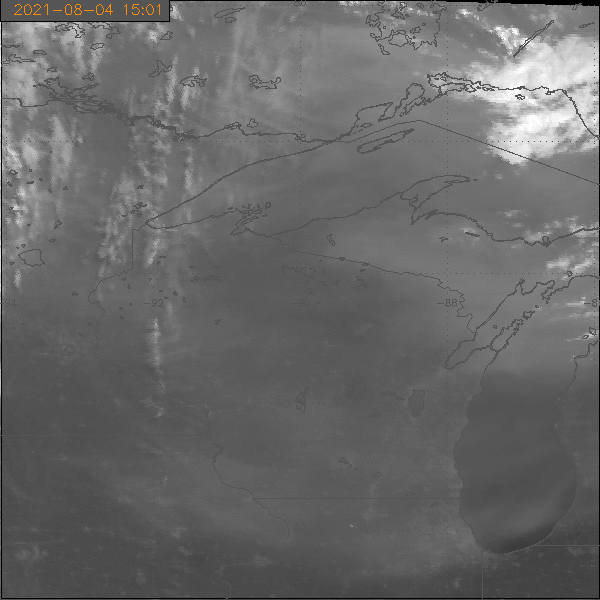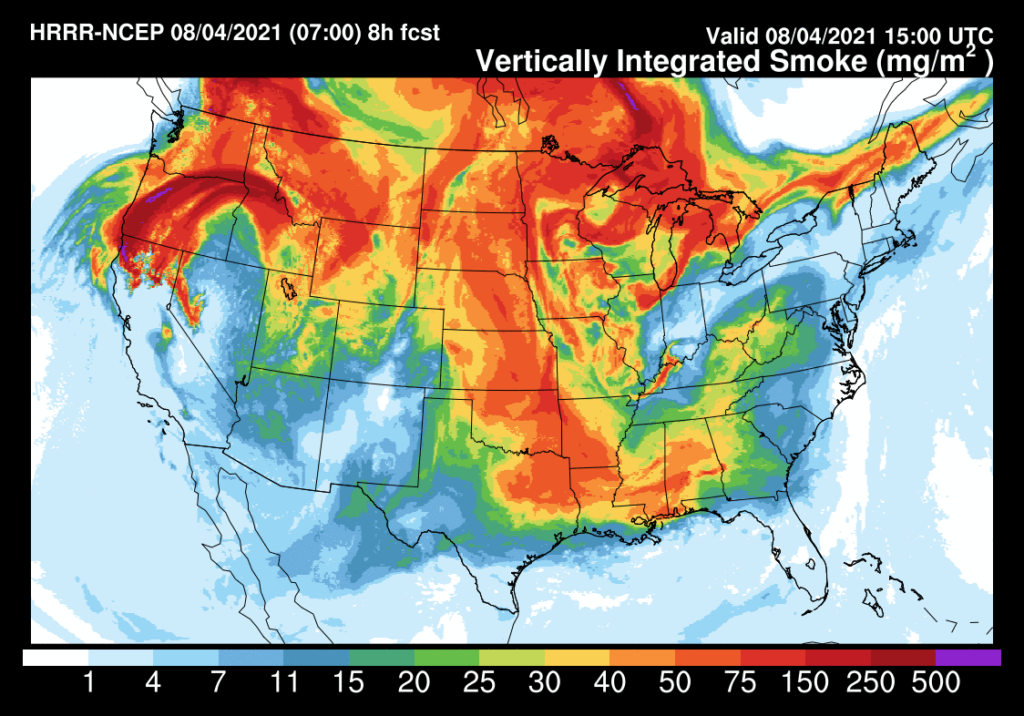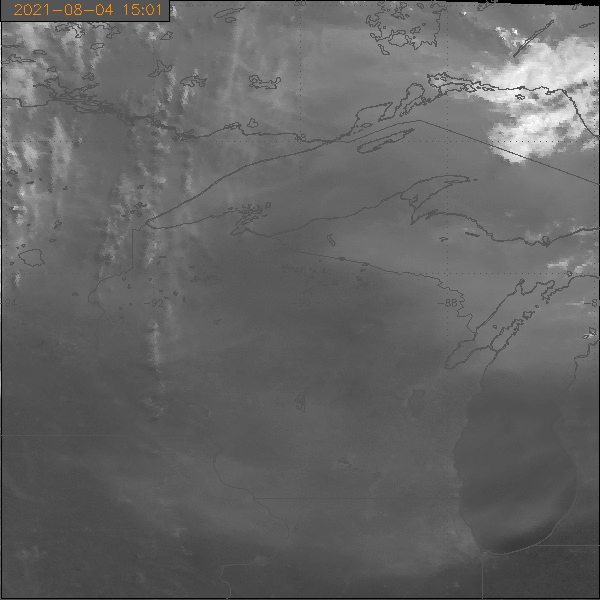Enhancing Smoke Detection with Red Visible imagery

Detection of smoke is a challenge in regions with clouds. The bright reflectance from clouds can make the subtler (and usually not so bright) smoke features difficult to view. This blog post briefly shows how visible imagery can be manipulated to facilitate smoke detection. The animation above shows visible imagery (GOES-16 Band 2 at 0.64 µm) at 2-km resolution. The sixteen half-km pixel visible reflectances within the larger pixel have been averaged to create the 2-km resolution image, and a square-root enhancement (from 0-100%) has been applied.
August 4 was a day with a smoke pall over much of the upper midwest, as suggested below by HRRR Smoke Model output below. How distinct is that pall in the imagery above, especially in regions of cumulus and cirrus clouds, such as over northeastern Minnesota? Can the visible imagery above be manipulated so that smoke features are enhanced?

The animation below shows 2-km resolution data again (with a square-root enhancement applied), but instead of the mean reflectance value from the 16 1/2-km pixels used, the minimum reflectance of those 16 pixels is shown. The smoke in the air is more noticeable (and the clouds are less noticeable).

You can also display the maximum pixel value of the 16 1/2-km pixels within the 2-km pixel footprint. That’s shown below (also using a square-root enhancement). This brings out the clouds at the expense of smoke detection.

A PowerPoint presentation that contains the imagery above is here. Thanks to Andy Heidinger, NOAA, for these images.

